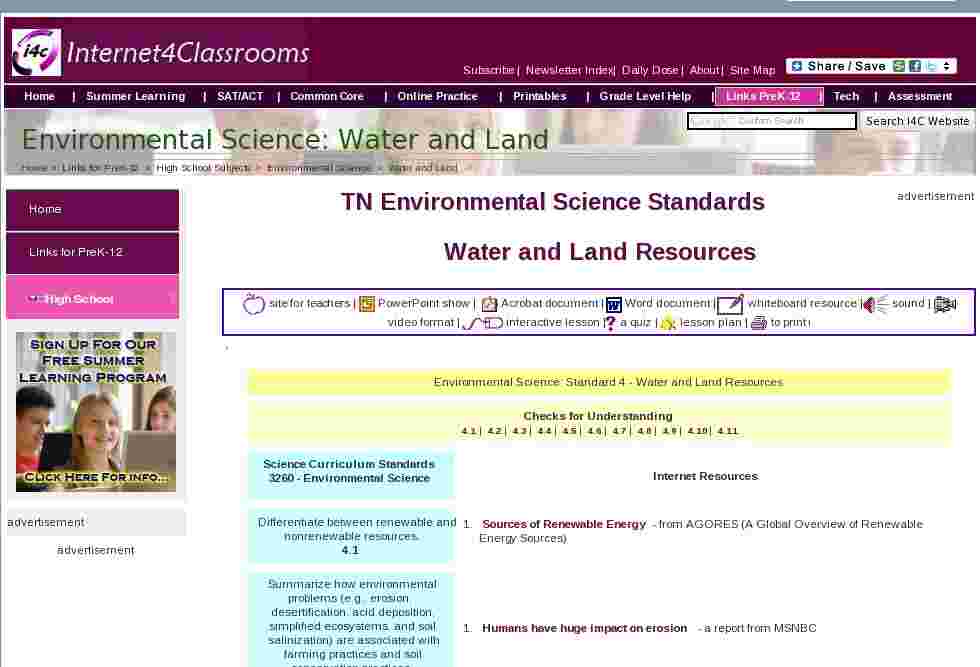TN Environmental Science Standards
Water and Land Resources
site for teachers |
PowerPoint show |
Acrobat document |
Word document |
whiteboard resource |
sound |
video format |
interactive lesson |
a quiz |
lesson plan |
to printt
Science Curriculum Standards
3260 - Environmental Science
- Sources of Renewable Energy - from AGORES (A Global Overview of Renewable Energy Sources)
- Humans have huge impact on erosion - a report from MSNBC
4.9
Search Internet4Classrooms
 Custom Search
Custom Search
- Site Map |
- About Us |
- Teacher Training |
- Make Internet4Classrooms.com your home page. |
- Copyright © 2000-2024 Internet4Classrooms, LLC All rights reserved.
Use of this Web site constitutes acceptance of our Terms of Service and Privacy Policy.
1764988072494013 US 2 desktop not tablet not iPad device-width